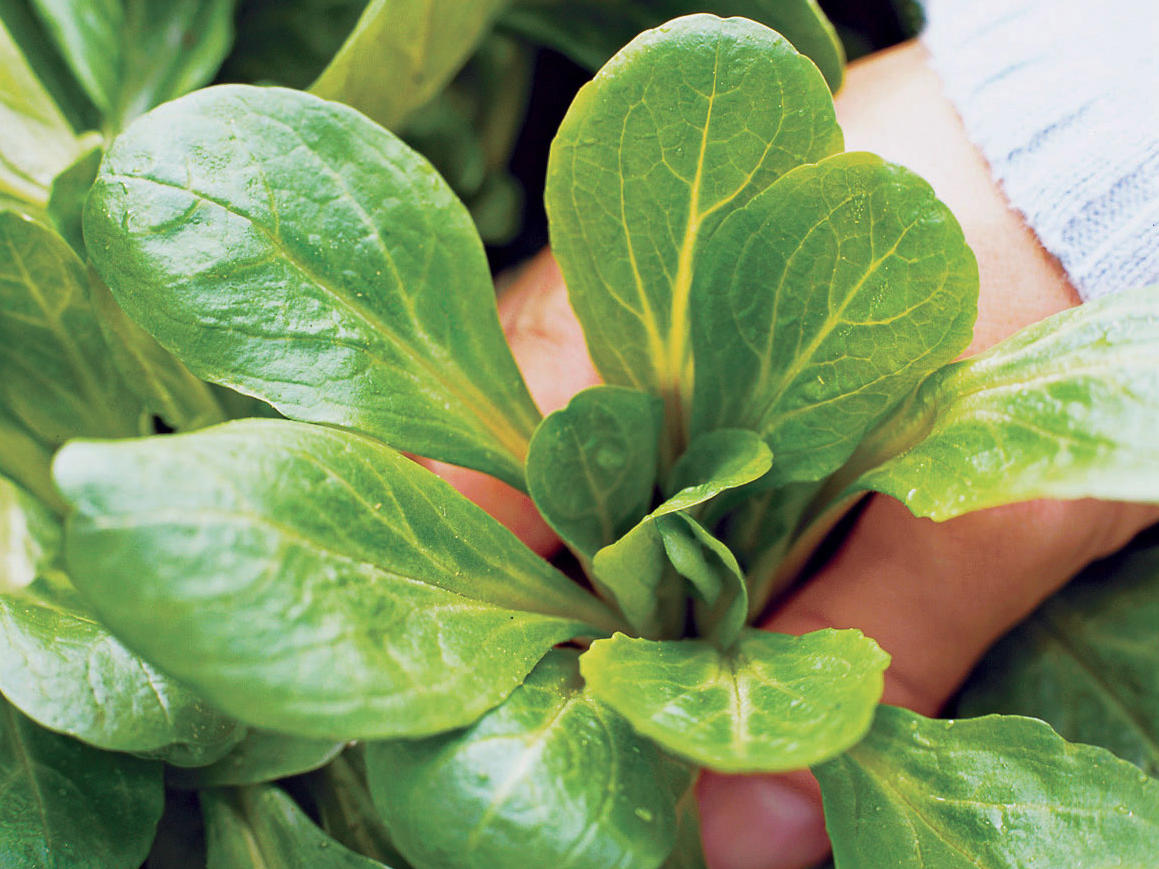
Mild Mâche Is Easy to Grow

Once considered a coarse weed, mâche (mahsh) is now a chic salad green. Before French farmers began cultivating it in the 17th century, mâche (Valerianella locusta) was harvested from fields where it grew among cereal crops like corn, rye, and wheat―hence one of its common names, corn salad (it’s also known as lamb’s lettuce).
The sweet, slightly nutty leaves are tender and juicy. To truly appreciate this delicacy, serve mâche the traditional European way: lightly dressed with a simple vinaigrette. If you have hazelnut or walnut oil, this is the green to drizzle it on. The French also like to add chopped, hard-boiled eggs or sliced roasted beets. Mâche is good mixed with sharper-tasting greens like arugula or endive. Or try braising it lightly as you would spinach.
As you might expect, mâche grows as easily as a weed, but you’ll need to start from seed since plants are seldom sold. Sow this cool-season annual directly in the garden as soon as the soil is workable. Mâche is quite cold-tolerant, so late frosts won’t harm it. It grows slowly, taking up to 60 days to mature, but you can snip off and eat outer leaves while the plant is growing. The leaves stay sweet on the plant for quite a while without turning bitter. When temperatures top 80°, mâche wants to bolt (go to seed). Harvest most of the rosettes but let a few flowers form seeds; mâche self-sows readily, so next year’s crop is likely to seed itself.
Taste why the French relish this tender and juicy gourmet green (then plant some for yourself)
What it needs
• Cool air. Mâche seed germinates best when temperatures are 55° to 68°, making it suitable for planting in the early spring or in the fall.
• Sun or light shade. Desert gardeners can plant in a lightly shaded spot that doesn’t get afternoon sun.
• Moist soil. Keep soil moist until seeds germinate in 14 to 28 days; water regularly thereafter. Mulch the soil around plants.
• Modest space. V. locusta grows into small rosettes about 1 inch across. When seedlings are large enough to handle, thin to about 3 inches apart.
• Snail protection. The succulent leaves attract snails and slugs. Protect plants by putting out bait or growing them in raised beds encircled with copper bands. In desert areas, spread gravel mulch over the planting bed first, then sow right over it; seeds will fall through the cracks and plants will pop up through the stones.
Sources: John Scheepers Kitchen Garden Seeds www.kitchengardenseeds.com or 860/567-6086; Nichols Garden Nursery www.nicholsgardennursery.com or 800/422-3985; Renee’s Garden www.reneesgarden.com; Territorial Seed Co. www.territorialseed.com or 800/626-0866
A simple salad
In a large bowl, whisk together 2 tablespoons extra-virgin olive oil, 1 tablespoon red or white wine vinegar, and 1 tablespoon minced shallot. Add salt and pepper to taste. Add 6 cups rinsed and crisped mâche (4 oz.) and 1/2 cup halved cherry tomatoes; gently toss. Makes 3 or 4 servings.
